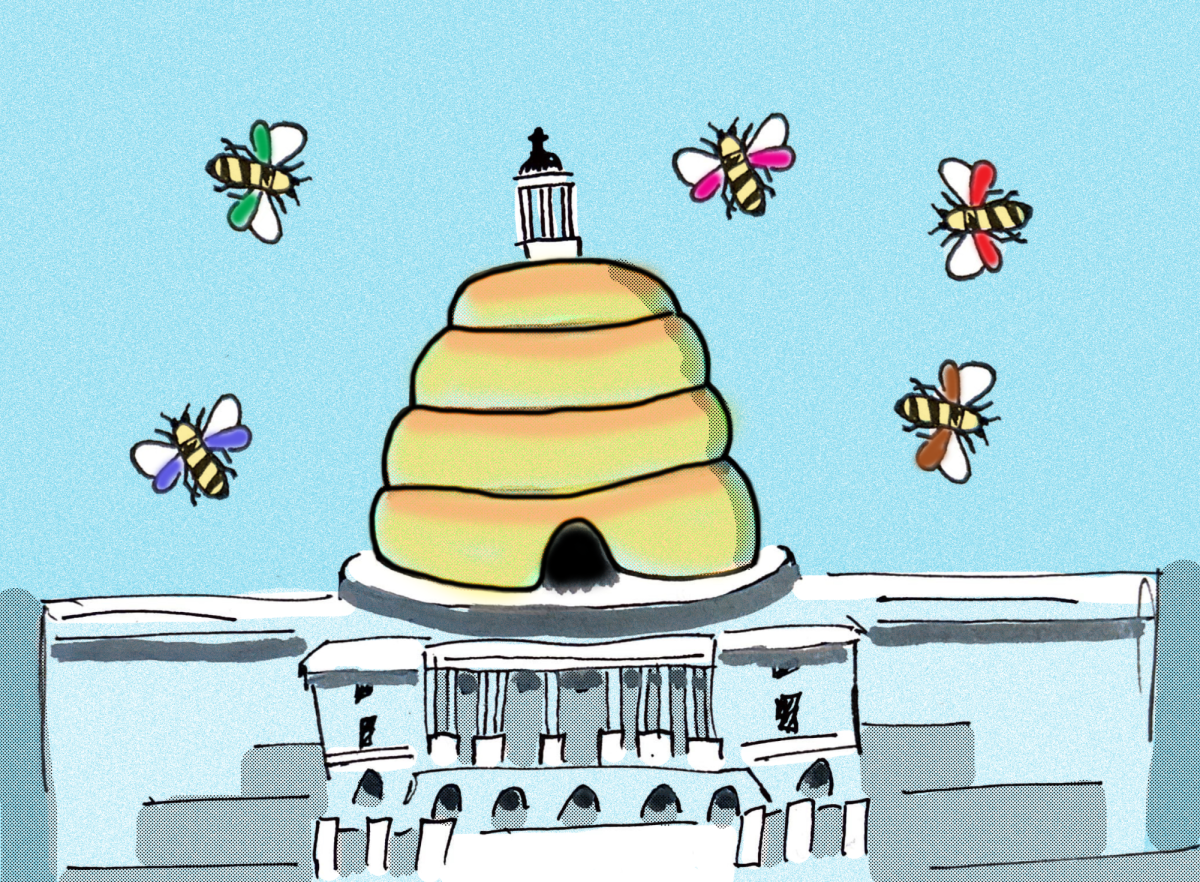Lien: Female Rebellion and Why Craft Matters
Photo by Wikemedia Commons: https://commons.wikimedia.org/wiki/File:Women%27s_March_on_Washington_-_woman_with_pussyhat.jpg
May 2, 2023
It’s easy to look down on female-coded work such as sewing or embroidery, but craft is an incredible means of communication. Craftivism and “women’s work” is a politically and socially relevant form of art that can’t be ignored in favor of the capitalization of creation.
Craftivism, or craft activism, refers to the act of using female-coded work as a form of activism. It has a long history in the American West, starting notably with the creation of suffrage banners in the 1900s. Women learned to sew clothes for their families, which led to many entering factories as textile workers because they had knowledge of the industry. Typically, women’s crafts get the title of “low art,” kitschy or stuff for suburban housewives. However, these names don’t make it any less important.
It’s asinine that, as a society, we’ve allowed women’s work to fly under the radar as a less important art form. Crafts such as sewing, weaving and ceramics create basic necessities, and it’s troubling to see how easily we take them for granted. Fabric and craft materials were often the only things these women had access to, so they became the primary form of political communication. Their limited access to the art world due to the cost of materials alienated common women from what we consider “high art.” According to Charis Fleshner, a craftivist and professor at Aims College in Colorado, this precedent owed conception to the social views of the time.
“There’s fine art and then there’s craft, and I think it has to do with, you know, women weren’t allowed in painting schools,” Fleshner said. “Women weren’t allowed in figure drawing, kind of thing. But they were expected to make the clothes and do cross stitch samplers.”
Art, or what we consider art to be, relies on status. It’s often relegated only to those who are professionally trained in the field. At the 1983 Whitney Biennial, a show hosted by the Whitney Museum of Art in New York, this notion was challenged.
“[The museum curators] opened it up and let in what were considered outsider artists or people who hadn’t come up through the hierarchy of the art world,” said Beth Krensky, a professor of art at the University of Utah. “The critics were so angry, they refused to cover it.”
Craftivism aims to take the creation of art out of the high art world and give it back to common people. It’s radicalizing what it means to be an artist, and changing who can be artists. It’s about subverting the expected norms of craft. Craftivists take what can be seen as traditional, such as cross stitch, and write some form of politicized message or statement with it. In using fabric and embroidery floss — and even hair — these craftivists are intentionally transforming the narrative into one of power and autonomy. Erin Coleman Serrano, a professor of art and communication at Westminster College, stated, “I think activism requires that you put yourself out on the line. Because, you know, it’s an act of change.” By using her own hair in her work, Coleman Serrano aims at truly changing what art looks like.
The DIY nature of craftivism draws from fringe communities like punk, critiquing the systems of racism, patriarchy and queerphobia. Like the riot grrrls of the ’90s, women are using mediums that speak to them, which introduced punk aesthetics into their craft. Along with the rise of domestic craft in the punk activist scene, craftivism is also popular among queer creators. The AIDS Quilt, or the NAMES Project, is one of the most recognizable pieces of craftivism. The 54-ton patchwork blanket displays panels of those who have been lost to AIDS/HIV, and continuously educates and inspires creators.
Craftivism still has use in the contemporary political world. After the inauguration of former President Donald Trump in 2017, marchers flooded the streets in pink Pussyhats to demonstrate their support for women’s rights. These cat-eared hats were crocheted, knit or sewn and were a community effort to show solidarity.
Not all activism needs to be loud. Sometimes it can be subversive and work just as well. Krensky said it best: “Really infused through most of my art is this idea of humble materials to address some often very difficult issues.” Political activism requires putting yourself out there, just in different ways than you might expect.
For a good starting point with craftivism, Shannon Downey, found online at Badass Cross Stitch, has free tutorials and patterns on their site. Recognized as a leader in the field, she has numerous videos and blog posts to help everyone learn how to embroider their personal message.












